Sports
Gopher Greeks reach NCAA Track & Field championships

If NBA superstar Giannis Antetokounmpo didn’t already own the nickname “Greek Freak”, the Gophers men’s track & field team would have a pair of athletes who deserve that moniker.
Kostas Zaltos and Angelos Mantzouranis both came to the University of Minnesota from Greece, and both are freakishly strong. Zaltos and Mantzouranis qualified for the NCAA Outdoor Championships in the hammer throw and will compete in Oregon later this week.
***Click the video box for the complete story from Alec Ausmus***
“The results are talking by themselves,” Zaltos said. “We are already doing the best.”
Zaltos, a senior, captured his fourth Big Ten title this year, further cementing his legacy as one of the most decorated throwers in Gopher history. Meanwhile, Mantzouranis, a rising underclassman, has quickly made a name for himself, breaking records and pushing Zaltos in every practice.
“I’m in a good physical spot,” Mantzouranis said. “I feel really good. I’m just looking for something better.”
Though only one can claim the national title, the two are used to competing against each other — it happens every day in training.
“I can’t catch a breath with him,” Zaltos said. “Even if I have a very good throw, I know he can top it with a better one.”
“I push him in the weight room, he pushes me in the throws,” Mantzouranis added. “We both benefit from it.”
Their practice field bears the marks of their battles — divots from hammer after hammer — but the pair still chase down every throw themselves.
“We’re getting our steps in,” Zaltos joked. “It’s good for our heart.”
As the NCAA Championships approach, the Gophers’ Greek duo will look to bring home top honors — even if it means one must edge out the other.
Sports
Women’s Lacrosse Brings On 12 New Faces for 2026-27 Academic Year
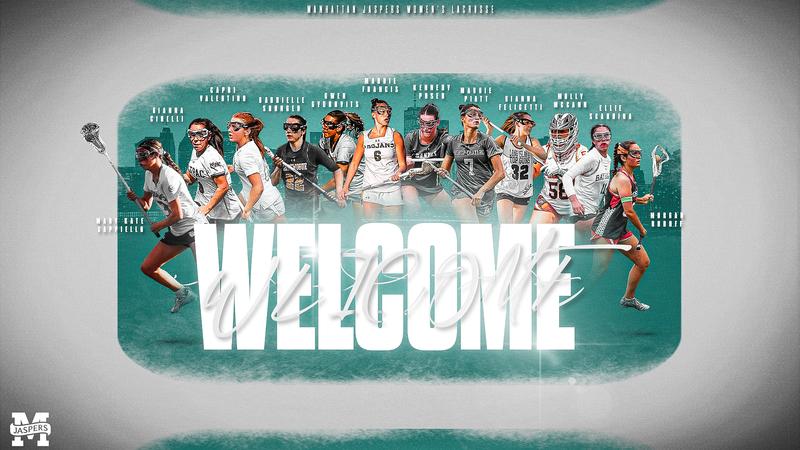
RIVERDALE, NY – Manhattan Women’s Lacrosse Head Coach Jenna Dingler has announced 12 additions to the Jaspers program ahead of the 2026-27 academic year, on Monday afternoon. These names include Mary Kate Cappiello, Gianna Cirelli, Gianna Felicetti, Maddie Francis, Gwen Gyurovits, Molly McCann, Maggie Piatt, Kennedy Poser, Ellie Scardina, Gabrielle Sohngen, Morgan Rodoff, and Capri Valentino.
Mary Kate Capiello – Midfield – Drexel Hill, PA
Prior to College: Four years of varsity lacrosse at Bonner Prendie Catholic High School … Stands at 92 goals and over 100 career assists … Four Time All-Catholic Selection … Played basketball, field hockey, track, and soccer as well at the varsity level … Team Captain for both basketball and lacrosse … Four years of student council.
Why Cappiello Chose Manhattan: “I chose Manhattan for the welcoming community and the way it felt like home right when I got to campus. I love both the coaches and atmosphere here.”
Dingler Quote: “Mary Kate is a versatile, athletic midfielder who brings a competitive edge and toughness to the midfield.”
Gianna Cirelli – Midfield – Mahopac, NY
Prior to College: Played three years of varsity lacrosse at Mahopac High School … Tallied 87 goals, 101 ground balls, 27 assists, and 63 draw controls in her ongoing career … Also been a varsity cheerleader, track runner, and tennis player … All-Section and All-League selections … Honor Roll first three years of high school.
Why Cirelli Chose Manhattan: “I chose to go to Manhattan University to play Division I women’s lacrosse because I love the beautiful campus and the supportive community it offers. Manhattan offers amazing opportunities to student-athletes, such as amazing training facilities and coaching to strong acadmemic support. This helps me balance both my academics and sports. Their psychology program is known to be amazing which will challenge and inspire me to grow both on and off the field. Manhatttan felt like the perfect place to call home while being able to pursue my passion for lacrosse and getting a great education, along with making lifelong friends.”
Dingler Quote: “Gianna is a small, but mighty attacker out of Mahopac High. She will bring speed, skill, and a high-level of playmaking ability to the offensive end.”
Gianna Felicetti – Attack – Lindenhurst, NY
Prior to College: Two seasons of varsity lacrosse at Kellenberg Memorial High School … Accumulated 70 draw controls, 25 goals, and 20 assists … Honor Roll student … Played at the club level for Long Island Top Guns.
Why Felicetti Chose Manhattan: “I love the atmosphere, coaches, campus, and location.”
Dingler Quote: “Gianna will bring size, power, and versatility to both the offense and the draw circle.”
Maddie Francis – Attack – Simsbury, CT
Prior to College: Four years of varsity lacrosse from Simsbury High School … Netted over 100 career points … CIAC Class L State Champions in the spring of 2025 with Simsbury … First Team All-State and CCC All-Conference past two seasons … High Honor Roll and AP Scholar.
Why Francis Chose Manhattan: “I chose Manhattan because I loved the lacrosse program and absolutely fell in love with the campus! I love having all the opportunities that Manhattan offers me!”
Dingler Quote: “Maddie will come in as a creative attacker, bringing quickness, vision, and playmaking ability to our offense.”
Gwen Gyurovits – Attack – Voorheesville, NY
Prior to College: Five years of varsity lacrosse at Voorheesville High School … Accumulated 130 goals and 96 assists for a total of 226 points … Three-Time First-Team Colonial Council All-Star … Times Union Athlete of the Week … Also played two years of varsity soccer.
Why Gyurovits Chose Manhattan: “I chose Manhattan because the coaches along with the players on the team had great energy and made me feel very welcome when I first met them. The campus and its location was appealing. Along with the campus, I loved the city environment around it.”
Dingler Quote: “Coming in as a dynamic draw specialist and midfielder, Gwen adds strength, skill, and fierce competitiveness to our unit.”
Molly McCann – Goalkeeper – Hatboro, PA
Prior to College: Played varsity lacrosse at Upper Moreland High School … Recorded over 100 career saves in her first season as goalkeeper … Breakout Player of the Year (2024) … Member of National Honors Society … Top 9% of graduating class.
Why McCann Chose Manhattan: “I chose Manhattan University because overall it was such a great fit for me. The campus is beautiful in a perfect location, a good mixture of the neighborhood of Riverdale and a 35 minute subway to Times Square and just over 90 minutes from my home. Manhattan was filled with such friendly people walking on campus, professors, coaches, and teammates. Manhattan is very well known for their engineering program which I want to pursue in college, as they just got a new building for engineering! Being a part of a great conference like the MAAC, I’m looking forward to my upcoming years at Manhattan!”
Dingler Quote: “As a lifelong lacrosse player, Molly brings energy, competitiveness, and a steady presence between the pipes. She will be ready to make an immediate impact.”
Maggie Piatt – Attack – Indianapolis, IN
Prior to College: Four years of varsity lacrosse at Bishop Chatard High School … Led the state in assists, led team for last three seasons in both goals and assists … All-Conference and All-Area selection … Honorable Mention All-State … National Honors Society member and Honor Roll selection.
Why Piatt Chose Manhattan: “I chose Manhattan for the diversity, as well as a new experience away from home.”
Dingler Quote: “Maggie brings size, power, and versatility to the offense and draw circle.”
Kennedy Poser – Midfield – Monmouth Beach, NJ
Prior to College: Two years of varsity lacrosse at Ranney School … Tacked on 76 goals, 74 ground balls, 14 assists, 128 draw controls, and 33 forced turnovers … Shore conference Leader in goals scored and draw controls (2025) … First-Team Independence Division (2025).
Why Poser Chose Manhattan: “I chose Manhattan because I wanted to both be in the city and play lacrosse.”
Dingler Quote: “Coming in as a skilled, competitive midfielder, Kennedy brings speed, talent, and a strong work ethic.”
Ellie Scardina – Defense – Farmingdale, NY
Prior to College: Played varsity lacrosse at both Farmingdale and Saint Dominic High School in Oyster Bay … Two-time All-League … Accumulated 31 caused turnovers, 22 goals, and 16 assists … Varsity starter since freshman season … Two-time scholar athlete.
Why Scardina Chose Manhattan: “I chose Manhattan because I love the atmosphere and the welcoming I got when I first stepped onto campus, it felt like home.”
Dingler Quote: “Coming in as a tough and talented defender, Ellie brings grit, discipline, and a lockdown presence to the defense.”
Gabrielle Sohngen – Defense – Port Jefferson Station, NY
Prior to College: Four years of varsity lacrosse at Comsewogue High School … Anchored the defense for her team in that time … Unsung Hero Award and Warrior Award … Also plays varsity field hockey … National Honors Society member.
Why Sohngen Chose Manhattan: “I chose to attend Manhattan University because of the atmosphere and people. The team dynamic is amazing and it felt like home to me. The teammates, coaches, and staff all made me feel so welcomed. I love that the classes are smaller which enables me to get more individualized instruction and enforces a better learning environment.”
Dingler Quote: “Being a hardworking defender, Gabrielle adds toughness, determination, and a team-first approach.”
Morgan Rodoff – Defense – Lansdale, PA
Prior to College: Four years of varsity lacrosse at North Penn High School … All-League Suburban One … Honor Roll selection.
Why Rodoff Chose Manhattan: “I chose Manhattan for the location, the academics, and the super welcoming team and coaching staff.”
Dingler Quote: “Steady and strong, Morgan brings good energy, a relentless work ethic, and a commanding defensive presence.”
Capri Valentino – Attack – Allentown, NJ
Prior to College: Four years of varsity lacrosse and team captain at Notre Dame High School in Lawrence, NJ … Career statistics include 137 goals, 121 assists for a total of 258 points, along with 50 ground balls, 16 draw controls, and three forced turnovers … All-Trentonian Attacker of the Year … All-CVC First-Team … Honor Roll selection.
Why Valentino Chose Manhattan: “I chose Manhattan because I loved the coaching staff, and I’ve been going to NYC since I was little and I cannot wait to live there. I’m super excited to be a part of the lacrosse program, it seemed like a family and I can’t wait to take part in the team bonding.”
Dingler Quote: “A highly decorated attacker, Capri brings creativity, precision, and a pure scorer’s mindset. Her vision of the attack will add a ton of value to our offensive unit.”
Follow Manhattan Women’s Lacrosse on X (@ManhattanWLax) and Instagram (@ManhattanWLacrosse_).
Sports
Vixen Volleyball Serves Up Comeback Season • Sweet Briar College
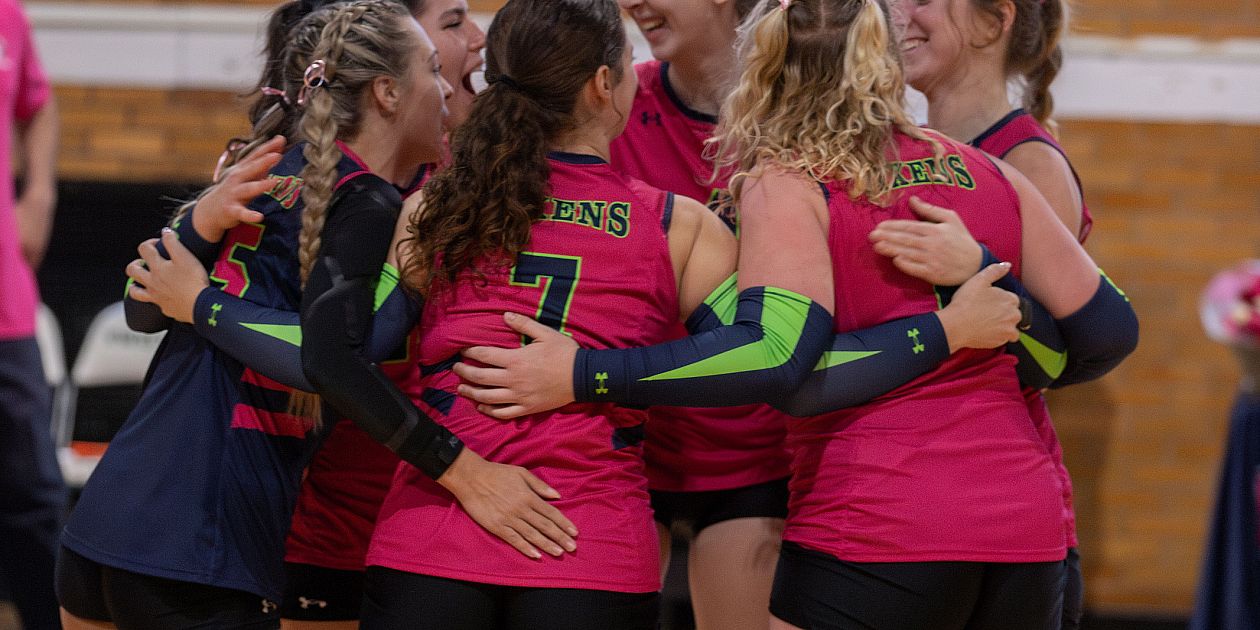
Starting in August, Williams Gym welcomed back the sound of balls bouncing, sneakers squeaking, and the scoreboard buzzing as Vixen volleyball returned to Sweet Briar.
Previously active from 1979-2010, the volleyball program saw success on the court with three student-athletes named to the Old Dominion Athletic Conference (ODAC) All-Conference Team in 1995, 2001, and 2002. In spring 2025, Vixen Athletics announced the return of the program, giving new life to volleyball at Sweet Briar. To lead that charge, AJ Escobar was tapped to serve as head coach.

Starting a new program involves facing numerous challenges, chief among them recruiting a team and preparing for competition. In lieu of taking a year to plan and recruit, Escobar jumped right in to start a season of independent competition. This year’s roster was composed of 12 student-athletes, including returning students, incoming first years, and transfers. Escobar, accompanied by Gracyn Wright ’28, came to Sweet Briar from St. Andrews University following the announcement of the university’s closure.
“From the moment he arrived on campus, Coach Escobar has shown exactly the kind of vision, energy, and resilience we were looking for to bring volleyball back to Sweet Briar,” said Director of Athletics Donna Meyer Hodgert ’89. “He has faced every obstacle head-on—from a roster of largely inexperienced athletes to jumping straight into NCAA competition without a recruiting year—and he’s done it with unwavering positivity. Coach Escobar’s determination, and belief in our student-athletes have already reenergized our program and laid a foundation for the future of Sweet Briar volleyball.”
When looking at the current student body to fill out the team’s roster, Escobar sought out athletes that understand Sweet Briar and know what it means to be a Vixen.
“Many on the team were already a part of the College. They know how the school runs, they know what’s expected, and they know how to be a part of Sweet Briar,” Escobar said. “That was my biggest thing when I was holding tryouts in August, finding athletes that fit those criteria. We also benefited from students who brought true athleticism to the team.”
Among those who joined the team as a returning student was Clara Delattre ’25, a senior leader on campus who brought a lot of assistance to Escobar and the team. The comeback season featured a full schedule of 21 games, offering the Vixens many opportunities to strengthen their skills and build the foundation of the program.
“Rebuilding the volleyball team has been an incredible experience,” said Rachael Hunt ’29. “I met an amazing group of girls, forged strong bonds that I’ve never found anywhere else, and my athletic capabilities were explored in ways that have been unique to this team.”

“In three years, I’d love to be established in the ODAC as a fierce team, having a consistent and competitive atmosphere,” he said. “The support from Donna Hodgert, Brian Hensley, Nicole Schimmenti, our athletic trainers, and everyone in Athletics, as well as President Hutson, throughout a chaotic start was absolutely amazing and fantastic. I’m very appreciative of them. They do their jobs very well. Thank you.”
Sports
Introducing Vandal Volleyball’s Fall Signees, Gabby Marshall & Zola Zuccolo

MOSCOW, Idaho – As they prepare for the upcoming season, Idaho Volleyball continues to strengthen the foundation of the program’s culture. The additions of incoming freshmen Gabby Marshall and Zola Zuccolo reflect the commitment head coach Romana Redondo Kriskova and her staff have made to bringing in athletes who elevate the standard through both mindset and character.
Coming off of a season with a team composed mostly of athletes in their first tear in black and gold, Idaho finished with one of the more successful campaigns since the program’s most recent conference championship appearance in 2018. For a program on a rise unseen in recent years, Marshall and Zuccolo are the next pieces to pursue Idaho’s return to the postseason.
MEET GABBY
An incoming freshman middle blocker from Hershey, Pa, Marshall is one of two newcomers joining the Vandals’ 2026 roster. She spent four years competing with Fusion Volleyball Club and was a three-year starter at Hershey High School, where she established herself as a dominant presence at the net on both offense and defense.
The 6’2″ middle brings tremendous length to the net, posting an 8’2″ standing reach and a 10-foot flat approach jump. Her size, paired with strong timing and anticipation, allows her to consistently shut down opponents’ attacks, disrupt offensive rhythm, and anchor the defense.
Marshall is also engaged in service, volunteering with Special Olympics and initiatives supporting students with developmental delays or additional needs. Academically, she plans to major in Biology and pursue a Bachelor of Science degree.
“I’ve always loved the quote “hard work beats talent when talent doesn’t work hard,'” said Marshall. “What drew me to Idaho was just how different it was from all the other colleges I had offers from. The team and the coaches were exactly what I was looking for. I’m so excited to be a Vandal that it still feels a little weird saying it.”
MEET ZOLA
Coming to Idaho from Beaverton, Oregon, Zuccolo brings strong club and high-school experience, adding depth to the setter position. She was a two-year varsity starter at Jesuit High School, helping lead the program to the 6A State Championship and an undefeated 12–0 league record. After her senior season, she earned OSAA First Team All-State honors. Zuccolo also competed with Athena Volleyball Academy, where she played on the 18 Gold National Team.
Zuccolo had an outstanding high school career, capped by an even stronger senior season at Jesuit. As the Crusaders’ setter, she recorded 567 assists, ranking among the top five totals in the state of Oregon. She also added 143 digs, 44 service aces, and 22 total blocks. Her offensive impact and all-around consistency position her well to make a strong transition at the collegiate level.
FOLLOW THE VANDALS
To stay up to date with Vandal Volleyball, follow the team on Instagram (vandalvolleyball), X (IdahoVolleyball) and visit govandals.com
Sports
No. 12 BYU to face No. 22 Georgia Tech in the Pop-Tarts Bowl – BYU Athletics – Official Athletics Website
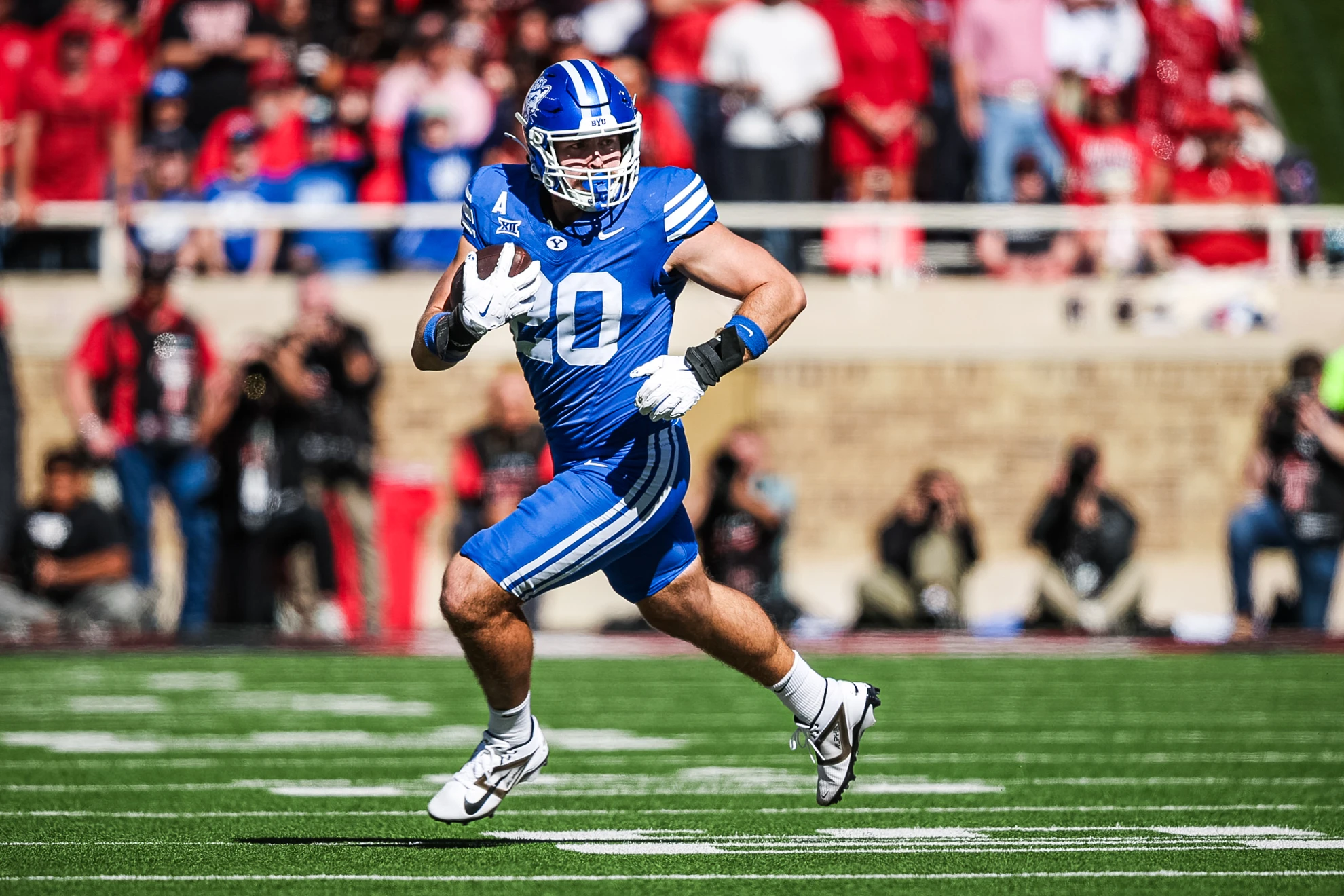
PROVO, Utah — No. 12 BYU has accepted an invitation to play No. 22 Georgia Tech in the Pop-Tarts Bowl at Camping World Stadium in Orlando, on Saturday, Dec. 27. The game is scheduled for 3:30 p.m. ET and will be broadcast nationally on ABC.
The Cougars (11-2) and Yellow Jackets (9-3) are being featured in the 36th edition of the annual bowl game played in Florida that first began in Miami as the Blockbuster Bowl in 1990. This year’s game will be the third year under Pop-Tarts’ title partnership and the 25th played at Orlando’s Camping World Stadium.
This is BYU’s 42nd bowl invitation which ranks No. 24 all-time among FBS teams. Georgia Tech is playing in its 48th bowl game, ranking No. 15.
Series History
This will be the fifth meeting between BYU and Georgia Tech in a series that started in 2002. The Cougars own a 3-1 advantage to date, with a 2-0 record in Provo and 1-1 mark in Atlanta. This will be the first bowl matchup and neutral site game between the two schools. The last meeting was 38-20 BYU win at LaVell Edwards Stadium in 2013. Georgia Tech won the first game in Atlanta by a 28-19 score.
Georgia Tech
Georgia Tech achieved a 9-3 record, including victories over then No. 12 Clemson and eventual ACC Champion Duke, to earn a No. 22 final CFP ranking on Sunday. Like BYU, the Yellow Jackets started the year with an 8-0 record to earn a top-10 ranking in the major national polls. Tech is coming off a hard-fought 16-9 defeat against now SEC champion No. 3 Georgia in Mercedes-Benz Stadium in Atlanta.
Georgia Tech and BYU played one common opponent during the 2025 season. The Yellow Jackets opened the year with a 27-20 victory over Colorado of the Big 12 in Boulder. The Cougars also visited Boulder this year, opening Big 12 Conference play on the road against the Buffaloes with a 24-21 come-from-behind victory.
The Yellow Jackets boast an offense that ranks No. 12 in the nation, producing 466.3 yards per game with a balanced attack. Tech is ranked No. 19 in rushing offense at 203 yards on the ground on average and No. 29 in passing offense at 263.3 yards per game.
BYU Cougars
Led by 2025 Big 12 Coach of the year Kalani Sitake, BYU achieved its fourth double-digit victory season in the past six years and was one of just 10 FBS teams to finish the 2025 regular season with 11 or more victories. The Cougars reached the 11-win mark for the second consecutive season and for the fourth time under Sitake among a total of 14 overall 11-victory campaigns in the history of the program.
The Cougars have tied for the best conference record in back-to-back seasons and this year finished as the league runner-up after falling for the second time this year to No. 4 Texas Tech on Saturday in the Big 12 Championship game. Sitake has led the Cougars to 22-4 over the past two seasons, the sixth-best record in all of the FBS with a an .846 win percentage.
BYU’s strong complementary football features the No. 19 scoring defense at 19.0 points per game and No. 34 scoring offense with 31.9 points per game. The Cougars were also among the best red zone teams on both sides of the ball, with the defense allowing scores just 72.92 percent of the time to rank No. 9 nationally and the offense scoring at a 92.45 percent clip inside the 20 for No. 10.
Ticket Info
Sports
Eagles Flash Potential Despite Defeat at No. 3 South Carolina
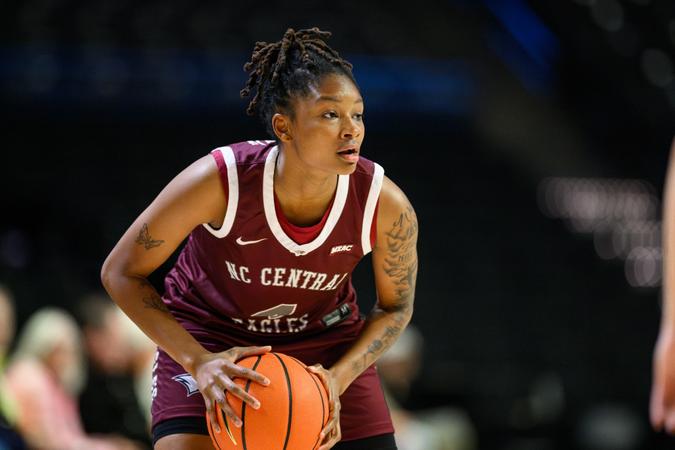
COLUMBIA, S.C. – North Carolina Central gave an inspired effort in a 106-42 women’s basketball loss to national powerhouse South Carolina at Colonial Life Arena on Sunday.
Tierney Coleman scored a team-high 14 points for the Eagles, who led briefly early and gave glimpses of their potential as their non-conference season winds down. The NCCU guard was 5 of 8 from the floor, including a career-tying four three-pointers on six attempts. She added four rebounds and two steals.
Coleman scored 11 first-half points as the Eagles were energetic early. Aniya Finger, who finished with nine for the game, knocked down her first career three-pointer for a 3-2 NCCU lead.
Dianna Blake canned a short jumper to put the Eagles ahead 5-4, and Victoria Morris added a corner jumper to extend the margin to 7-4.
In the opening five minutes, NCCU was 4 of 8 from the floor for 50 percent, including 2 of 3 behind the three-point line for 67 percent.
The third-ranked Gamecocks stormed ahead 26-11, but Coleman wowed the crowd with a three-pointer at the buzzer to end the first quarter.
USC (9-1 overall) led the rest of the game, but the Eagles gave maximum effort. In the first half, the Eagles led the Gamecocks in field goal percentage (43.5 percent to 40.5 percent) and three-point field goal percentage (40 percent to 20 percent). NCCU was on fire in the second quarter, making 62.5 percent of its shots.
Coleman shot 4 of 7 in the first half, including 3 of 5 behind the three-point arc. She added three rebounds and two assists.
The Eagles (1-8 overall) made their last three jumpers to end the first half, including a Coleman three-pointer to slice the margin to 42-25. The Gamecocks led 46-25 at halftime.
The Gamecocks took complete control in the second half, winning the third quarter 28-2.
The Eagles continued to battle in the fourth quarter. Morris scored four points and Coleman and Aysia Hinton both added three points while Najah Lane dished out three assists in the final frame.
NEXT UP
The Eagles are off the rest of the week before traveling to face High Point on Sunday, Dec. 14, at 2 p.m.
For more information on NCCU Athletics, visit NCCUEaglePride.com.
Sports
UTSA to face FIU in First Responder Bowl on Dec. 26 – UTSA Athletics
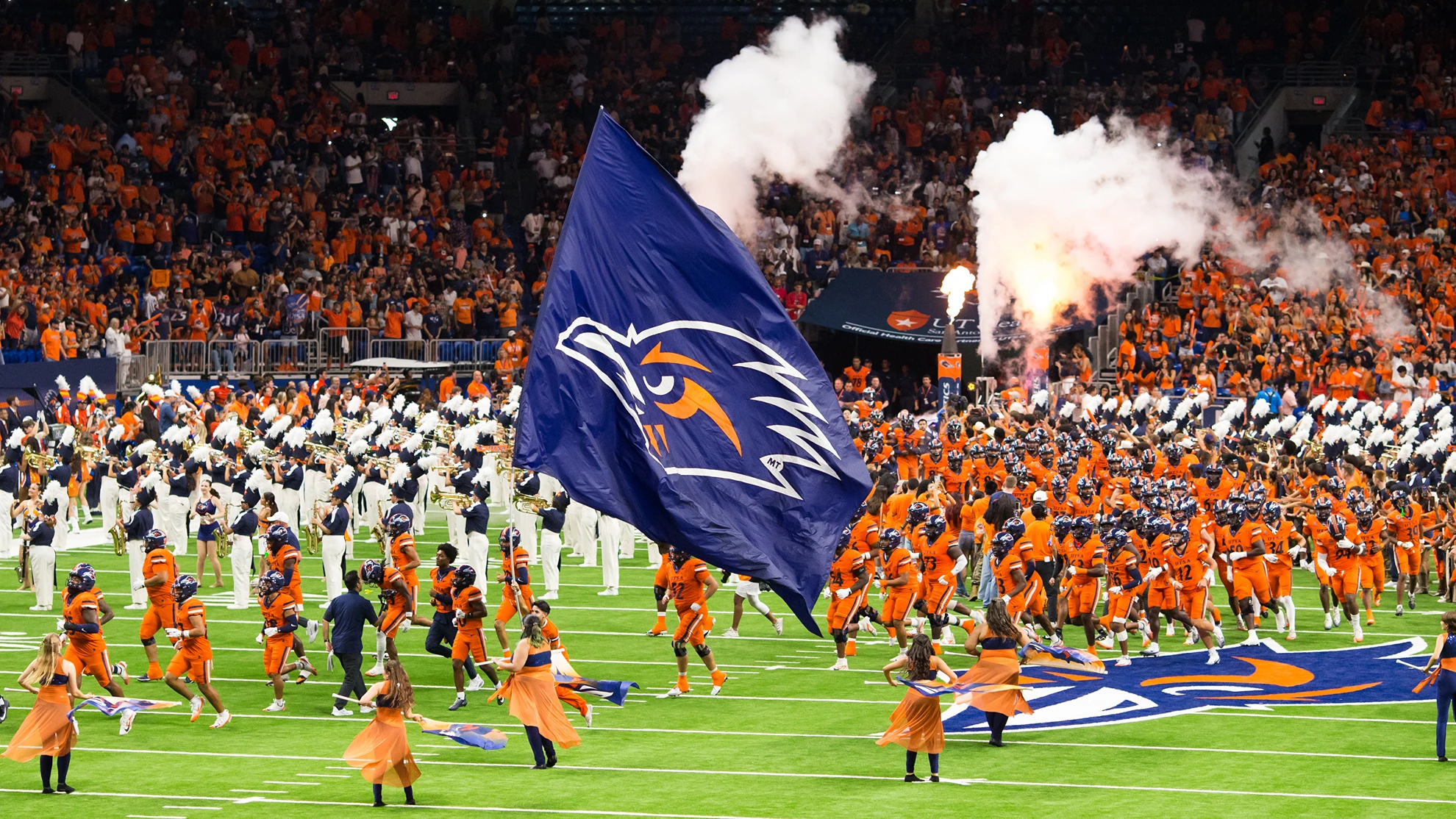
SAN ANTONIO — UTSA has been selected for its sixth straight and seventh overall bowl appearance, as the Roadrunners will face FIU in the SERVPRO First Responder Bowl on Friday, Dec. 26, in Dallas, Texas. Kickoff is scheduled for 7 p.m. at Gerald J. Ford Stadium and the game will be televised nationally on ESPN.
Fans can find out more information regarding tickets by visiting goUTSA.com. Purchasing your tickets directly from UTSA Athletics ensures you preferred seating options and financially supports the UTSA Athletics Department. UTSA will be able to negotiate preferred bowl options in the future based on previous ticket sales numbers and fan attendance. Seating will be allocated in RAF Loyalty Points order.
For more information about the bowl game, please visit UTSA’s Bowl Central website at goUTSA.com/bowlcentral. For the third straight year, Ancira Auto Group is the presenting sponsor of UTSA’s bowl game appearance and radio broadcast.
Under the direction of sixth-year head coach Jeff Traylor, the Roadrunners will make their second appearance in the SERVPRO First Responder Bowl, as they also played in the game in 2020. UTSA won two of its last three games to close out this regular season with a 6-6 overall record, including a 4-4 mark in the American Conference.
FIU will enter the bowl game at 7-5 overall. The Panthers are riding a four-game winning streak that helped them finish 5-3 in Conference USA.
This will mark UTSA’s fifth all-time meeting with FIU, as the two teams met four times as members of Conference USA. The series is tied at 2-2 with the Roadrunners registering a 30-10 triumph on Oct. 14, 2022, in Miami in their last matchup with the Panthers.
The Roadrunners will travel to Dallas in search of their third straight bowl win. Last December, UTSA raced past Coastal Carolina, 44-15, in the Myrtle Beach Bowl in Conway, South Carolina, to improve to 2-4 all-time in bowl games. In 2023, the Roadrunners defeated Marshall, 35-17, in the Frisco Bowl for the program’s first-ever bowl victory.
Three years ago in the Cure Bowl, No. 22 UTSA built a 12-0 first-half lead, but No. 23 Troy rallied for an 18-12 win in Orlando, Florida.
In 2021, 24th-ranked UTSA met nationally ranked San Diego State in the Frisco Bowl. The Aztecs pulled away late for a 38-24 victory.
In Traylor’s first season at the helm, UTSA nearly completed a comeback against No. 16 Louisiana in the 2020 First Responder Bowl. The Roadrunners rallied from a 24-7 deficit to tie the game, only to see the Ragin’ Cajuns score a late touchdown and escape with a 31-24 victory.
UTSA made its first bowl appearance in just its sixth season of play at the 2016 New Mexico Bowl in Albuquerque. New Mexico built a 10-point lead and held on for a 23-20 win over the Roadrunners on a cold and windy afternoon at University Stadium.
First played following the 2010 season, the annual bowl game in Dallas began honoring first responders for the 2014 game. First responders include police officers, firefighters, EMS workers, correctional officers, search and rescue, dispatchers, security guards, federal agents, border patrol agents and military personnel who have specialized training and are the first to arrive and provide assistance at the scene of an emergency.
In 2018, the game was officially renamed the SERVPRO First Responder Bowl to reflect the efforts to show appreciation to first responders. Tickets for first responders are underwritten by corporate partners.
Gerald J. Ford Stadium has served as the site of the last six contests, four of which have been decided by a touchdown or less. The game, previously known as the Heart of Dallas Bowl and TicketCity Bowl, was originally contested at Cotton Bowl Stadium.
The SERVPRO First Responder Bowl is one of 17 college football bowl games owned and operated by ESPN Events. For additional information, please visit FirstResponderBowl.com and follow on Facebook and Twitter/X.
-UTSA-
-

 Rec Sports2 weeks ago
Rec Sports2 weeks agoFirst Tee Winter Registration is open
-

 Rec Sports2 weeks ago
Rec Sports2 weeks agoFargo girl, 13, dies after collapsing during school basketball game – Grand Forks Herald
-

 Motorsports2 weeks ago
Motorsports2 weeks agoCPG Brands Like Allegra Are Betting on F1 for the First Time
-
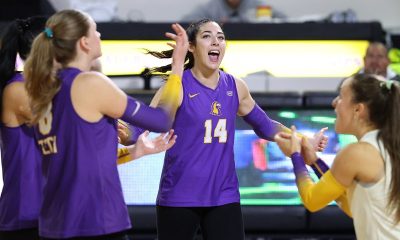
 Sports3 weeks ago
Sports3 weeks agoVolleyball Recaps – November 18
-

 Motorsports2 weeks ago
Motorsports2 weeks agoF1 Las Vegas: Verstappen win, Norris and Piastri DQ tighten 2025 title fight
-
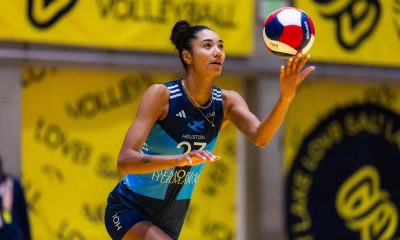
 Sports2 weeks ago
Sports2 weeks agoTwo Pro Volleyball Leagues Serve Up Plans for Minnesota Teams
-

 Sports2 weeks ago
Sports2 weeks agoUtah State Announces 2025-26 Indoor Track & Field Schedule
-
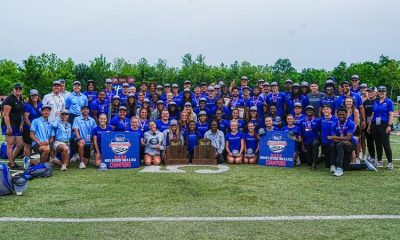
 Sports2 weeks ago
Sports2 weeks agoSycamores unveil 2026 track and field schedule
-

 Motorsports2 weeks ago
Motorsports2 weeks agoRedemption Means First Pro Stock World Championship for Dallas Glenn
-

 Sports2 weeks ago
Sports2 weeks agoTexas volleyball vs Kentucky game score: Live SEC tournament updates


























